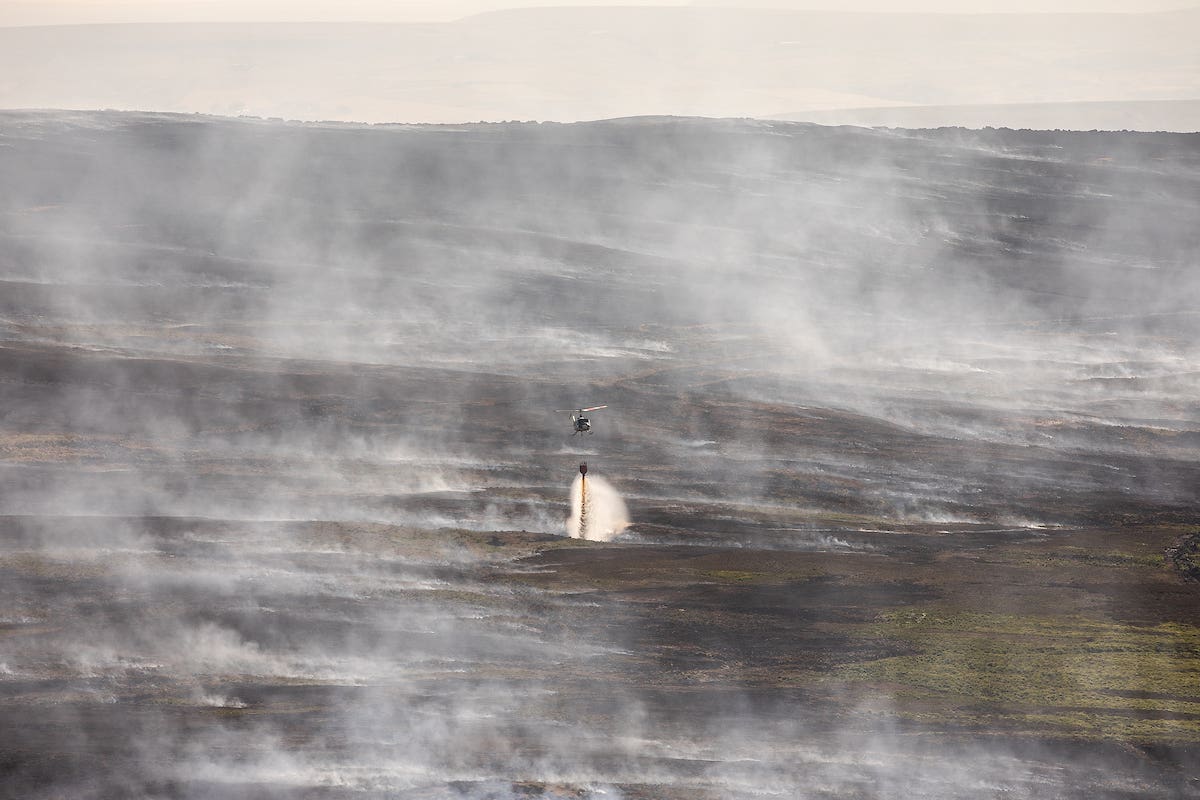Survey shows ‘few signs’ of peat recovering years after dramatic moorland blaze
Nature is coming back six years after wildfire at Smithills near Bolton, but peat will take hundreds of years to regenerate, conservationists say.

Your support helps us to tell the story
From reproductive rights to climate change to Big Tech, The Independent is on the ground when the story is developing. Whether it's investigating the financials of Elon Musk's pro-Trump PAC or producing our latest documentary, 'The A Word', which shines a light on the American women fighting for reproductive rights, we know how important it is to parse out the facts from the messaging.
At such a critical moment in US history, we need reporters on the ground. Your donation allows us to keep sending journalists to speak to both sides of the story.
The Independent is trusted by Americans across the entire political spectrum. And unlike many other quality news outlets, we choose not to lock Americans out of our reporting and analysis with paywalls. We believe quality journalism should be available to everyone, paid for by those who can afford it.
Your support makes all the difference.Peatland hit by devastating wildfire six years ago is struggling to recover, conservationists have said, although surveying shows nature is starting to make a comeback.
Surveying at Smithills estate near Bolton, Greater Manchester, has shown the ongoing damage to peatland from fire in 2018, but plants including all-important sphagnum moss are regrowing, and birds such as kestrels and skylarks have been spotted.
The site, a mosaic of grassland, farmland, moorland, woodland, wooded ravines and bog habitats, was bought in two stages by the Woodland Trust in 2015 and 2017, with plans to restore and better manage the countryside, streams and woodland for wildlife and the local community.
But in 2018 devastating wildfire during the summer drought damaged about a third of the estate, which includes Winter Hill, harming moorland and wildlife and killing about 2,000 trees in the upland areas of the site.
Emergency services worked day and night for 41 days to tackle the blaze.
Six years on, moorland surveys have been taking place, surveying two metre by two metre squares in selected sites to chart the wildlife and plants, and the peat has also been measured.
Smithills site manager Oliver Stainthorpe, of the Woodland Trust, said: “During the fire all the peat mass was damaged in some way, but on average 20cm of peat was completely lost and burnt away.
“There are still very few signs of this recovering.
It shows the damage catastrophic events, which are more likely due to climate change, can have on nature
“The grim reality is that it is takes something like 200 years to regenerate the peat to how it was.
“It shows the damage catastrophic events, which are more likely due to climate change, can have on nature.”
But he said: “It is not all doom and gloom, nature is bouncing back in some ways.
“There has been much recovery from plants and animals and our survey will help us to shape the future recovery and restoration of the complex environment under the ground.”
The ongoing surveys have found species including purple moor grass, turfed hair grass, wavy hair grass, mat grass and sphagnum moss, a key species known as the “sponge of the moorland” for its water-retaining properties.
Birds including meadow pipits, kestrels and skylarks have been spotted.
The peatland on the site was not in good condition before the blaze, as it had been artificially drained for water to be used in industry, the Woodland Trust said.
Work such as putting in “leaky dams” to slow runoff were carried out to restore land immediately after the fire damage and the next stage will be restoring it as a whole.
As part of the survey work, the team have also been identifying the location and characteristics of drains in the moorland, to contribute to restoration plans to reduce water flow and rewet the moors, the charity said.
Nature can bounce back but the damage caused from such a catastrophic event can take hundreds of years to overcome
Mr Stainthorpe said: “Our key aim is the restoration of the site, Smithills is blessed with a mosaic of habitats,peatlands and uplands oak woodland and upland wet woodland.
“Improved heathlands will increase local biodiversity, capture carbon, and decrease flood risk.”
And he said: “As well as restoration, we must try protecting the site from such a devastating incident occurring again, this summer we have had volunteers doing fire patrols to detect any threats.
“Nature can bounce back but the damage caused from such a catastrophic event can take hundreds of years to overcome,” he said.
Smithills is part of the Northern Forest, a scheme to establish 50 million trees across a swathe of northern England from Liverpool to Hull.